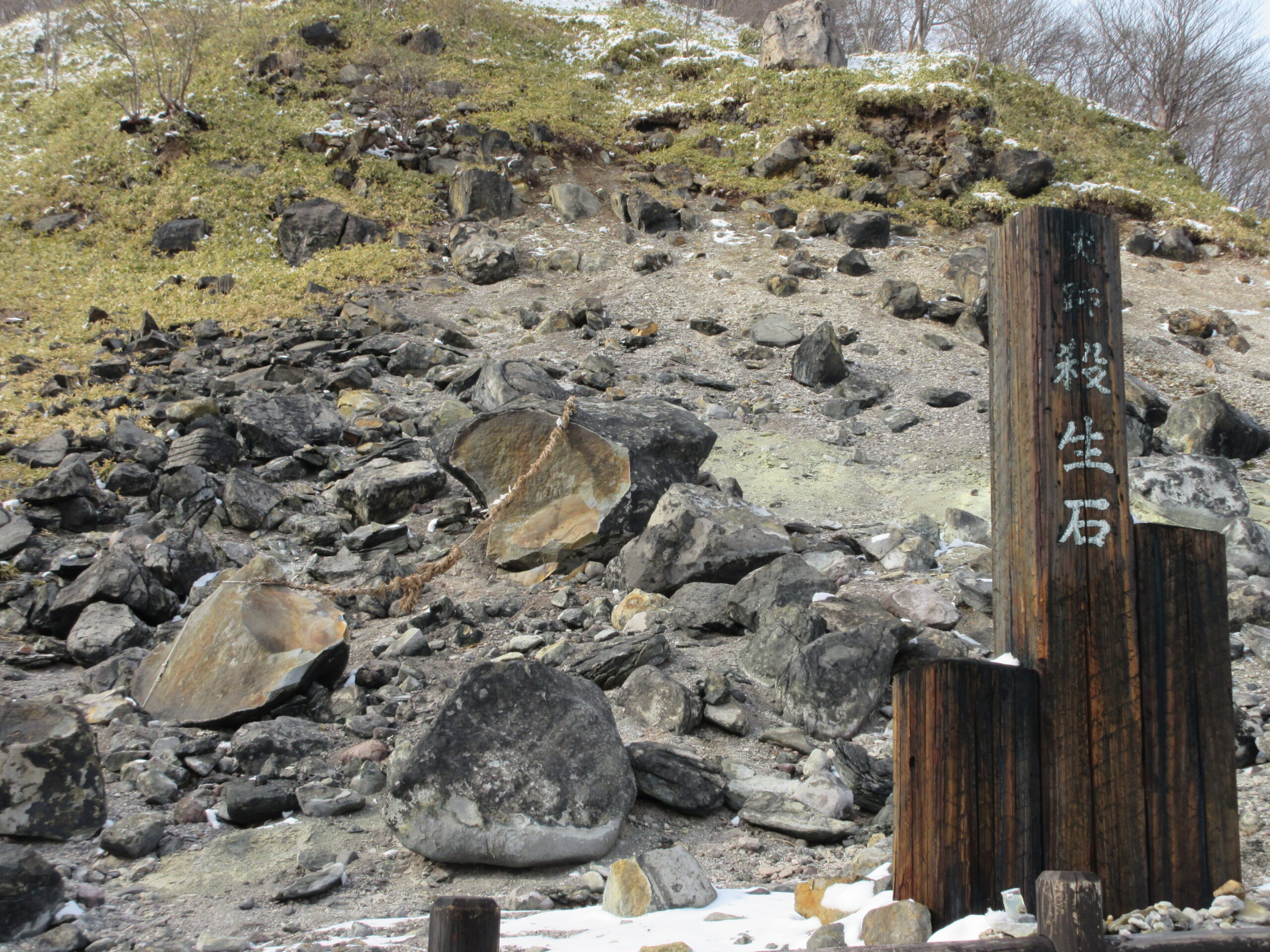Tamamo-no-Mae, a wicked and hostile nine-tailed fox spirit who could transform into an alluring woman, was contained within the stone split in half igniting a worldwide controversy. The older, wiser, and more powerful a fox (狐, Kitsune) becomes, the more tails it has (up to nine).
Last month, a slab of volcanic rock associated with the Japanese legend of a nine-tailed fox split in two, causing panic and alarm among residents and social media. Sessho-Seki, or "death stone," is a volcanic rock that was cracked open in Japan's Nikko National Park, some 100 miles north of Tokyo.
According to Japanese mythology, after an assassination attempt on the emperor, her soul was trapped within the Sessho-seki stone. The spirit of the fox was then transported to a stone in Tochigi, Japan, near Tokyo. The rock is believed to have been destroyed many years ago, and the demon was exorcised by a Buddhist monk who then spread fragments of the stone throughout Japan. However, many people think that the spirit's abode is still on Mount Nasu's slopes. According to legend, anyone who comes into contact with the stone will perish.
The Japanese word for fox is (狐, Kitsune). The foxes frequently appear in Japanese folklore. In legends, they are described as intelligent beings with magical abilities that improve with age and wisdom. According to Yokai tradition, all foxes can shapeshift into men or women. While some folktales depict Kitsune as cunning tricksters, similar to how foxes do in folklore, others portray them as devoted protectors, friends, lovers, and wives. Kitsune has been a part of Japanese religious culture for as long as the culture has existed in any meaningful sense. Long before imperial control, nomadic tribes inhabited Japan and firmly held polytheistic animist beliefs that powered their spirit worlds. (These ideas were not grouped as Shintoism until the advent of Chinese Buddhists and Confucians in the 6th century AD.)
The nine-tailed fox (Kitsune) recurs throughout stories in Japanese history, usually appearing as an intelligent and cunning being with paranormal abilities and often residing at Shinto shrines. In the Japanese creation story, they're portrayed as having a deep connection with their human companions and manifestations of a significant kami (Shinto spirit). The kitsune myths easily distinguish ordinary foxes and kitsune yokai – regular foxes have only one tail while the yokai animals have two, three, or even up to nine tails. What's more, according to the Shinto myths the more tails a kitsune has, the older and more powerful it is.
In ancient Japan, foxes and humans coexisted in close quarters, giving rise to stories about the species. Kitsune are strongly tied with Inari, a Shinto kami or deity, and act as messengers for him. The fox's mystical importance has been strengthened due to its role. Some people worship them as deities because of their potential power and prestige.
According to The Guardian, the volcanic boulder was a historical landmark in 1957 and a popular tourist attraction. Some speculate that the spirit of the fox demon Tamamo-no-Mae has been reborn after approximately 1,000 years, rendering the rock dangerous to people who dare to approach it.
Another possibility is that cracks in the granite emerged several years ago, allowing rainfall to seep inside and undermine its structure. It's unclear whether the fracture set the female fox spirit loose to wreak more harm, but there's hope. According to The New York Times, a tourism association in the Nikko area stated in a recent Facebook post that the stone's fracturing was an "auspicious foretoken" and that the nine-tailed fox spirit could "tame the coronavirus and the current world crisis."
When war wages and financial markets fluctuate, maybe Tamamo-no-Mae is the nine-tailed hero we didn't realize we were looking for. Japanese culture has long piqued the interest of various communities throughout the world, including Canadian painters and NFT producers who incorporate Tokyo-style aesthetics in their digital art and American gamers who are dedicated to the Nintendo brand. Another example of Japanese culture serving as a never-ending source of Western fascination.
Written by Joshua Marasigan, New Age Hub

























No comments:
Post a Comment